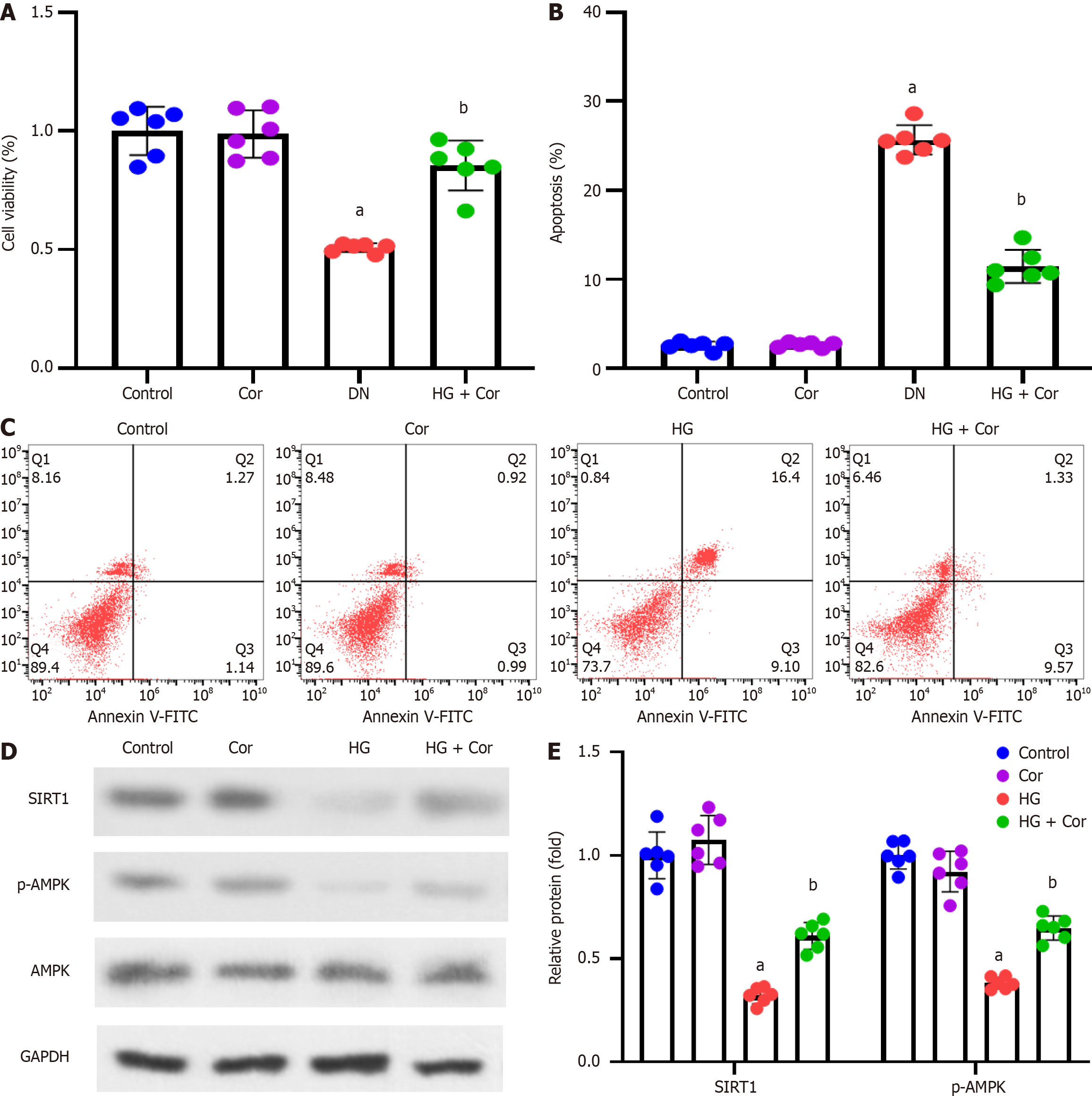Copyright
©The Author(s) 2024.
World J Diabetes. Sep 15, 2024; 15(9): 1916-1931
Published online Sep 15, 2024. doi: 10.4239/wjd.v15.i9.1916
Published online Sep 15, 2024. doi: 10.4239/wjd.v15.i9.1916
Figure 6 Corilagin attenuates podocyte damage induced by hyperglycemia and modulates SIRT1 and AMPK protein expression.
MPC5 cells were treated with corilagin (50 μM) and high glucose (D-glucose 30 mM) for 48 h. A: The effect of Cor on cell viability was assessed by 3-(4,5-dimethylthiazol-2-yl)-2,5-diphenyltetrazolium bromide assay; B: Cell apoptosis was assessed by Annexin V-FITC/propidium iodide double staining using flow cytometry; C: Representative images of flow cytometry. The upper left quadrant represents necrotic cells, the upper right quadrant represents late apoptotic cells, the lower left quadrant represents normal cells, and the lower right quadrant represents early apoptotic cells; D: Western blot showing representative bands of SIRT1 and AMPK in podocytes; E: Quantification analysis of SIRT1 and p-AMPK protein bands normalized to GAPDH and AMPK, respectively. Data are presented as the mean ± SD. aP < 0.001 vs control group; bP < 0.001 vs HG group. HG: High glucose; Cor: Corilagin; DN: Diabetic nephropathy.
- Citation: Lou Y, Luan YT, Rong WQ, Gai Y. Corilagin alleviates podocyte injury in diabetic nephropathy by regulating autophagy via the SIRT1-AMPK pathway. World J Diabetes 2024; 15(9): 1916-1931
- URL: https://www.wjgnet.com/1948-9358/full/v15/i9/1916.htm
- DOI: https://dx.doi.org/10.4239/wjd.v15.i9.1916









